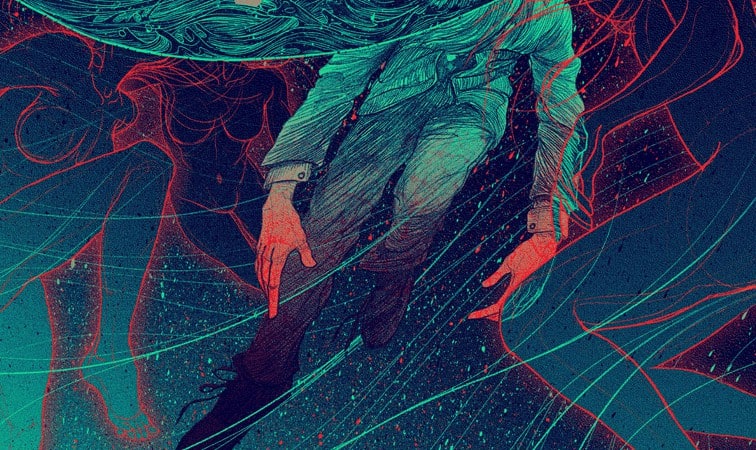
This won’t be a long introduction. It doesn’t need to be. Kevin Tong is an amazing illustrator. I first saw his work on my last trip to Austin where he was part of the ‘Universal Monsters’ show that the Mondo Gallery had put on and he had created an incredible ‘Bride of Frankenstein‘ print. The design was clean and moody — atmospheric.
He captured the stilted beauty of The Bride along with the creepiness of Dr. Frankenstein’s creation. Tong’s ‘The Bride of Frankenstein‘ is framed with surgical drapes like a grand theater, her chest opened — inside, a realistic human heart. Tong has an architect’s eye for clean structure with textured layers and pops of color, a mixture of the organic with crisp machine-like line work.
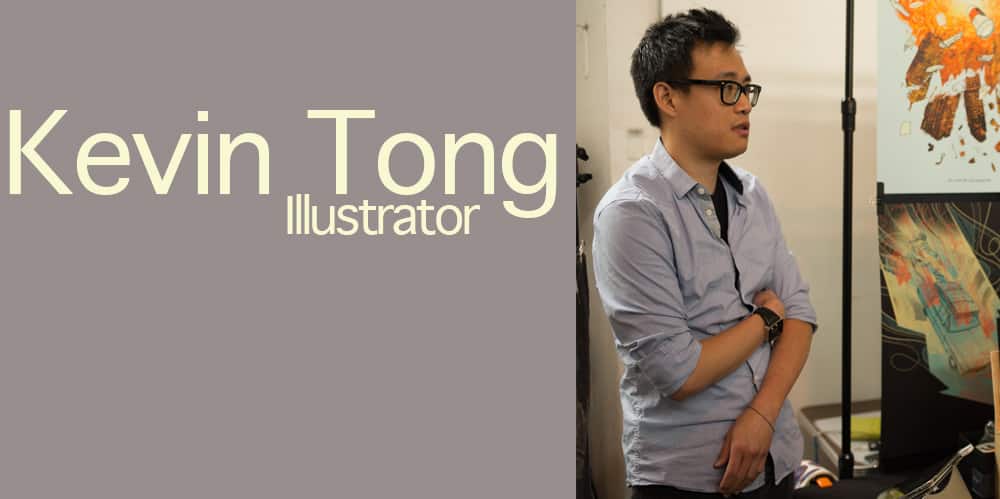
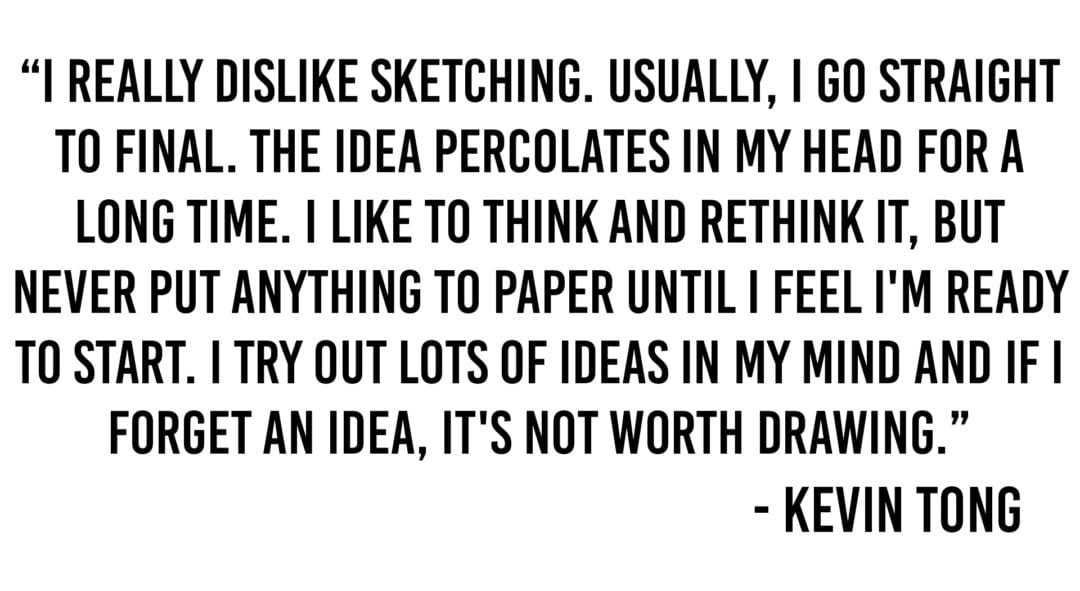
CJ: Your work has an incredible amount of intricate and subtle work to it. In your ‘Time Machine’ print — watching the process video for that you can see the level of work it takes to build up your detailed textures. What sort of path did you take to finding your style and workflow? Did you do etching or other printmaking methods before you landed on screen printing as your medium?
KT: I’m not sure if it was a single path. I’ve always been into using texture and line work to create depth and detail. The first major use of the style I currently work in was with a published children’s book I wrote and illustrated into 2005 (Kevin Tong’s ‘Earth Machine’ on Flickr).
I developed the style in school and built it up with my professional work. Screen printing was what I got started on and I haven’t really looked into other kinds of analog printing other than letterpress.
How long have you been working freelance? We’re you ever drawn to be an ‘in-house’ creative?
The first thing I did professionally was when I was still a student. In 2005 I wrote and illustrated a children’s book called the ‘Earth Machine’ and from that point on, I kept doing freelance in various fields (editorial, apparel, fine art, toy design). In 2008 I was an illustrator at Jakks Pacific Inc doing toy design and that was my only full-time job as an artist. Before that, I was freelancing in house at Lakeshore Learning Materials as a product illustrator. For a while, it was my goal to just get a job somewhere. Pressure from my family (to get a steady job) and a lack of experience made me see working in house as the only route. Once I attended Comic-Con San Diego in 2008, it really opened my eyes as to what a single person with ideas and ability could do. My job was great, but it’s not the kind of person I am. The only thing that drew me to working in house, were all the pretty girls that seemed to inhabit every design firm I visited.
Yeah, both design and advertising seem to be a magnet for cute girls. What’s your workday like? Do you try to force yourself to work a regular eight hour workday?
There’s never a typical day around here. Usually, I run errands during the day like buying supplies, calling businesses, and such. At night, I do all the creative work. Normal “hours” for me are waking up at 11 am and going to bed at 4 am. I never really work continuously. I’ll stop to take a nap, watch a movie, or go out to hang with friends.
My reasoning is that I feel I should take full advantage of being self-employed. Oddly enough, screwing around is part of the creative process. Often, I get stuck on something and the solution occurs to me at a bar or restaurant and I hurry home to implement it.
As far as workspace goes, do you have an outside office or do you work from home?
My studio is adjacent to where I live. I’m not sure what to call my space – a loft, storefront, studio, whatever. I like living close to where I work.
You have some awesome videos online that follow you through your process of creating your posters. Do you sketch heavily before you begin a piece? In the process video for the Mogwai poster, it seems that you just begin by drawing, creating a perfectly designed poster from your head. Of course, it is from your head, but is every element well plotted out before you start working in the final product?
Sketching, I really dislike sketching. Usually, I go straight to final. The idea percolates in my head for a long time. I like to think and rethink it, but never put anything to paper until I feel I’m ready to start. I try out lots of ideas in my mind and if I forget an idea, it’s not worth drawing. Eventually, through survival of the fittest, the entire image is formed in my mind, so I just start working. A lot of the thinking occurs when I’m driving somewhere, cooking, or hanging out. I’m told I look really upset when I’m thinking of ideas.
What inspired you to create the process videos?
Process anything is lots of fun. Artists that record their process have always been really interesting to me. Since I work digitally, there’s a lot of downtime waiting for the computer to save or to complete a process, so I use that down time to snap photos and edit video.
I first saw your work at the Mondo Gallery in Austin for their ‘Universal Monsters’ show. You did an amazing piece of the Bride of Frankenstein. I actually went back to the gallery three times during my visit to Austin, tempted by your poster and eventually caved to buying one but the gallery doesn’t ship. I checked online to see if I could find it there and stumbled on a few eBay auctions for the Bride print that ranged from $150 to $300. Over three times the selling price. It was like I had walked into an intense world of collectors. Does it bother you that folks would buy a poster just to upsell it online? Is that to be expected, or maybe desired to see so much interest?
Well, Chris, those people are called flippers, the ones who buy a poster just to sell it for more on the secondary market. Normally I don’t mind them, their presence is to be expected when it comes to any kind of collectible item. They definitely help drive the market and fuel interest in posters in general. If when they sell my work and make a profit, generally that money goes back into posters, maybe they’ll even use it to buy another one of my posters.
What I don’t like is when flippers buy my work and put it up for sale before I’ve even shipped it. That creates problems at times. Also, there are more flippers than ever now and they buy out the prints, leaving fans of the art with no choice but to buy on eBay for even higher prices. The third thing I don’t like is when flippers use the photos and descriptions I wrote on their eBay listings. It takes a lot of time for me to write and post that content and I do it for the fans, not the flippers. Ultimately, a person is free to do whatever they want with the property that they bought from someone else. I take steps to deter flippers, but I can’t really do much about it.
For something like the Mondo show, do they approach you? Did you create the poster specifically for that event?
Mondo usually approaches me, but I’ve approached them with ideas before. Anything I do for Mondo was exclusively created for them. I don’t even reuse the art on my business cards or products.
Printmaking is an interesting medium – it allows for reproductions of the same image to be produced yet still hold their artistic integrity. How do you decide how many prints to do of a particular image?
Like with the ‘Bride’ image you could keep printing them as long as you want but reading your FAQs page you are staunchly against printing up more runs of your images. What’s behind the decision to limit the quantity?
There really is no formula for how many prints should be in an edition. It’s usually based on how confident everyone is in the image and how popular the subject is. Reprinting is shady if you say the image is limited edition. If you don’t limit the edition, you can reprint as much as you want. Advertising that your product is limited edition gets people interested in buying it right away, but if you reprint it, that’s a total lie to the consumer. It’s shady and greedy. I don’t support reprinting, even if it’s an art print, color variant, or whatever.
Making a run limited is awesome to me because it’s the opposite of so much of our world. Most things we own aren’t special, like iPhones or cars. Millions were made and will continue to be made. On that note, something can be so special it’s unattainable, like original paintings. Screen printed posters dance the happy middle. If something of mine does well, I don’t reprint, I’ll just make something new.
Who do you see as your audience? You have collectors but you also have bands, magazines, major corporations, and galleries wanting your work.
You just listed my entire audience! The one thing you didn’t mention that is my most important audience is other designers, illustrators, and printers. I pride myself in having their respect. It’s for them I make the process videos and why I travel to do fairs and conventions so much. They make up most of my followers and fans.
Do you mentally separate your art into categories like ‘work’ and ‘fine art’? Do some pieces mean more to you than others, based on the impetus for creating it?
That’s a good question. Nowadays, I find myself making less and less art prints and working on commissioned work. Typically, I gravitate toward work from clients that will let me do whatever I want and don’t art direct a whole lot. Despite having all that freedom, I still strive to make an image that reflects their spirit.
In that way, I feel like the paid work is art because I get to really put myself into it. The clients seem to like that too because it creates a very distinct look for them. I’m mostly referring to band posters. I do have plans for art shows in the years to come, but no, I personally don’t view art in categories.
At your level of success do you get a chance to make art just for yourself without worrying about making a profit?
I call myself an illustrator, not an artist. All that self-expression crap is for a museum brochure. I draw things that I feel are compelling and thoughtful and share them with people who feel similarly. Since it takes me a long time to make an image, I usually prefer to sell it. Making a profit isn’t usually at the top of my list though. The best feeling is when I put out an image and other professionals contact me to tell me how much they like it.
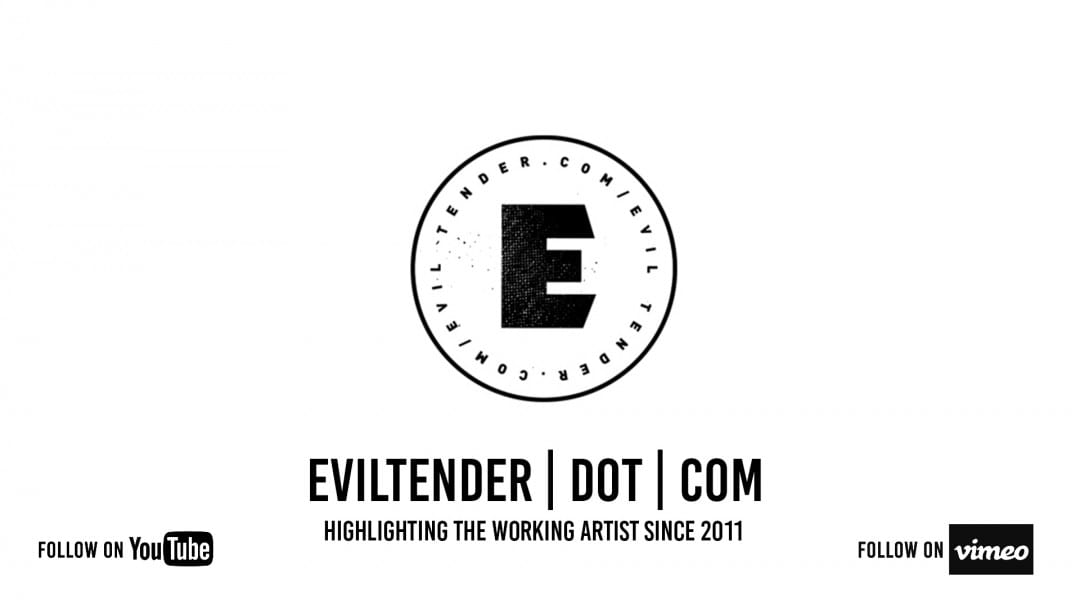
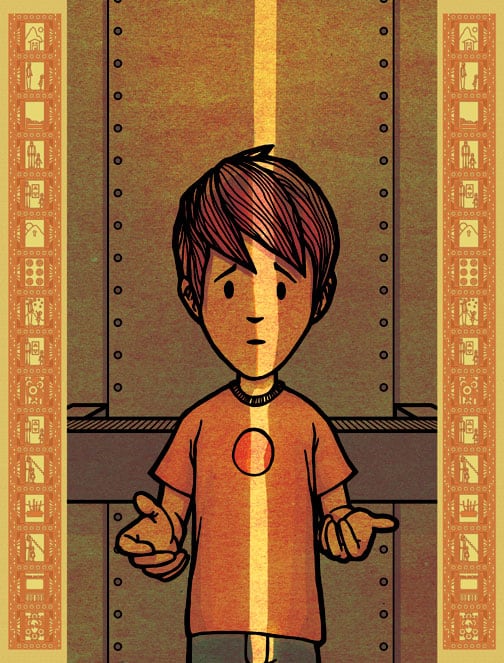

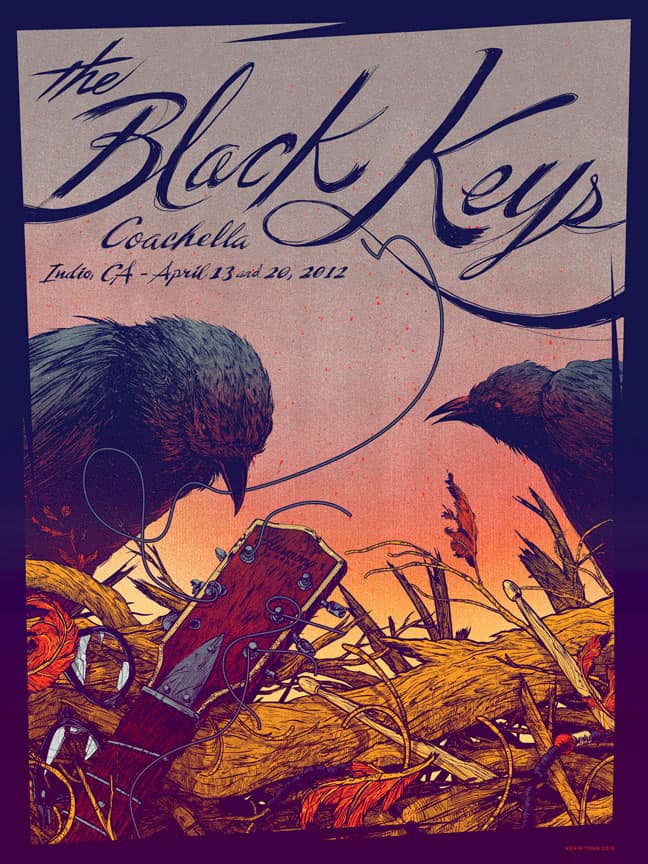
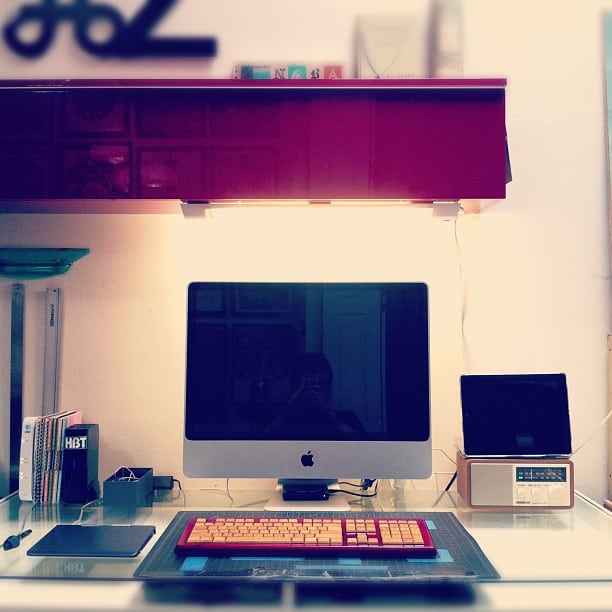
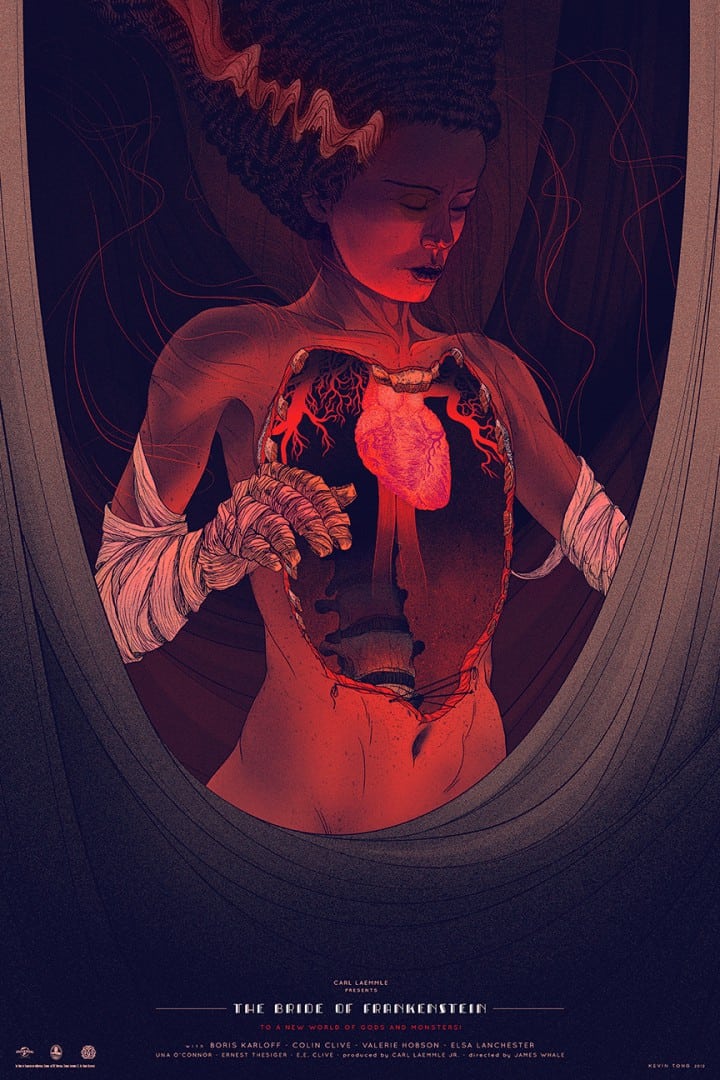
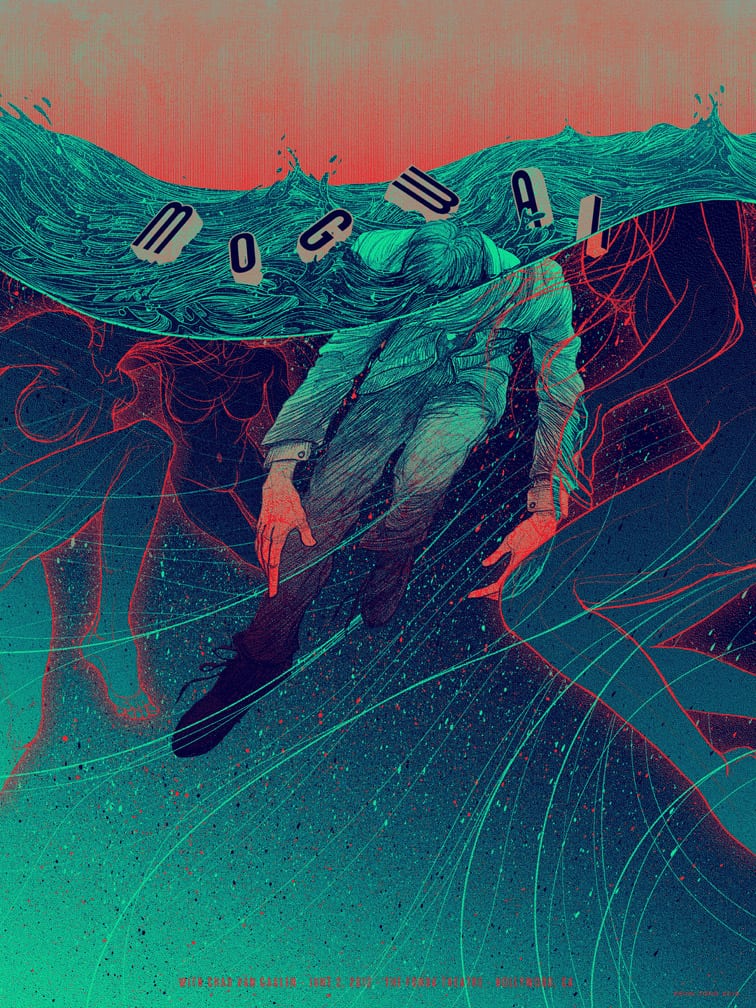

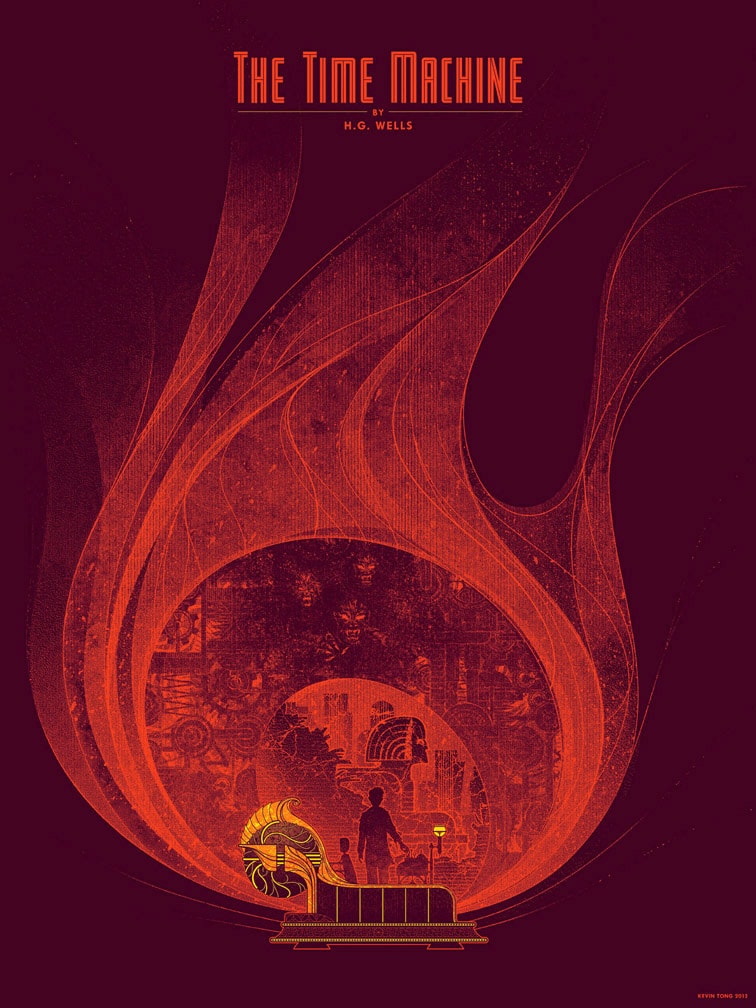




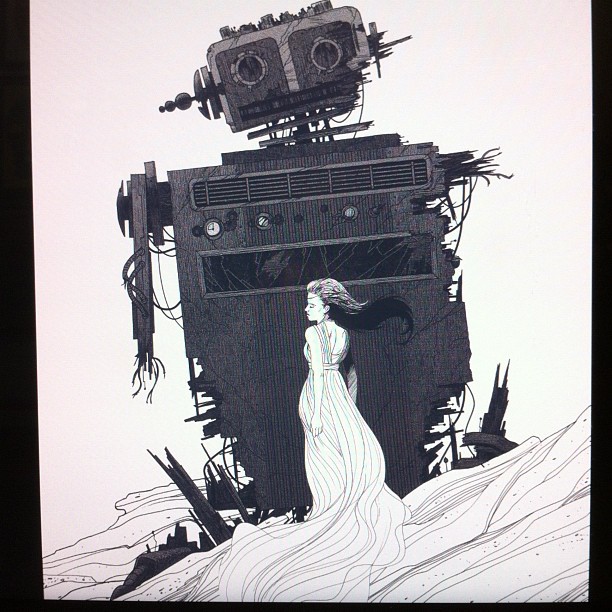
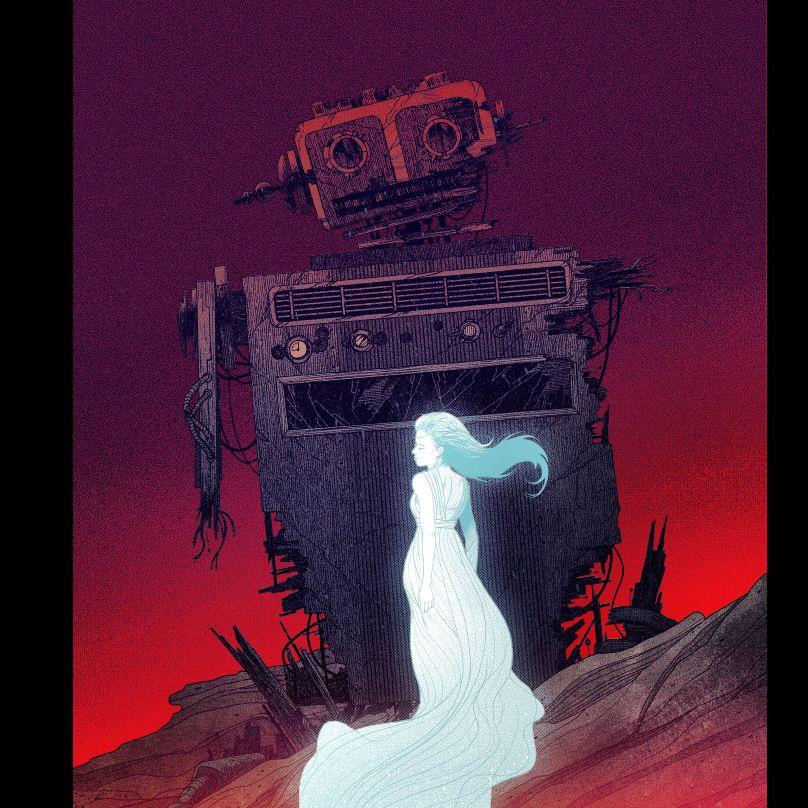
Incredible! I love his works so much. One of ths best fantasy/sci-fi posters out there…
Yes! He is one of my absolute favorites, and his work in the sci-fi / fantasy genre is incredible.